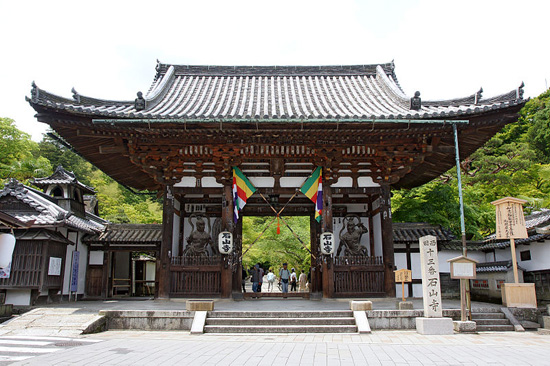The Tale of Genji

The Tale of Genji (Genji monogatari) was written by Murasaki Shikibu in the early 11th century. The author is named after the character, not vice versa, since no one knows who really wrote it. The best we can do is assume that it was written by a woman of the aristocracy and the court in Kyoto, for other women to read. The best evidence for this is the character of Genji himself, since he is most definitely a male ideal as imagined by an aristocratic woman – beautiful like a woman, but heterosexual. This site has a great overview of the story, characters and locations where the "novel" is set.
Shikibu is said to have begun writing it at one of Japan's most famous temples, Ishiyama-dera during a full moon night in August 1004. The temple sits on a hillside overlooking Lake Biwa. Above is a painting of the temple, The Autumn Moon At Ishiyama Temple, by the great 19th century painter Utagawa Hiroshige. His Ukiyo-e ("pictures of the floating world") woodblock paintings were avidly collected by van Gogh, Monet, Frank Lloyd Wright and others. This one is from around 1832-34 from a series called Omi Hakkei-no Uchi (Eight Views of Omi) - but note that he painted many versions of this series, all under the same title.
Below is the gate to Ishiyama-dera today and a statue of Shikibu in the temple's garden.

Speaking of the moon, there is another story - from the previous (10th) century - in which a mysterious princess from the Moon comes down to Earth to live among humans - Taketori Monogatari or Kaguya Hime, known variously as Princess Kaguya or The Tale of the Bamboo Cutter. She goes back home to the Moon in the end and, in sorrow, the Emperor orders his soldiers to burn the slopes of Mt. Fuji as a message to the departed princess asking her to return. She doesn't.
